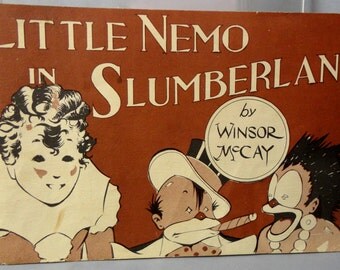


Pé’s dedication to reflecting McCay’s obsession with spatial organization and productive page layouts is evident in nearly every page.

There is no denying that Little Nemo: After Winsor McCay is an example of beautifully designed and gorgeously structured comics storytelling truthfully, I could look at the book all day.

Sadly, it is these changes, sometimes necessary but other times puzzling, that subsequently makes for an uneven return to McCay’s surreal playground of Slumberland. While much in his gorgeously illustrated volume demonstrates Pé’s commitment to McCay’s vision, some rather substantial alterations ultimately give his version of the work a feeling of inauthenticity. Li ttle Nemo: After Winsor McCay is Pé’s attempt to “pay Winsor homage by approaching the adventures of Little Nemo in own way” (p. Lauded for his prodigious use of form, colour, timing, pace, panel size and shape, perspective, hatching style, architectural detail, (etc.), McCay’s work has inspired many renowned cartoonists, like Robert Crumb and Art Spiegelman.Īnd now, we can add French artist Frank Pé to that list. Today, McCay’s Little Nemo comic strips are widely recognized as some of the earliest examples of formal experimentation in the comics form. It would run until its eventual conclusion in 1927. In 1924, McCay would revive Little Nemo in Slumberland back at the series’ original home, now called the New York Herald Tribune. He continued telling Little Nemo’s stories under a new title, In the Land of Wonderful Dreams, until 1914. It would be published by the Herald until 1911 when its creator, the renowned early master of comics art, Winsor McCay, was tempted to William Randolph Hearst’s New York American newspaper. The strip was called Little Nemo in Slumberland. These weekly episodic stories in art nouveau-style would always find Nemo ending his nightly visits to “Slumberland” by either falling out of bed or waking up to a call from his parents to get up and get ready for Sunday School. Each weekend, as a part of the Sunday Supplements, Little Nemo would journey in his dreams to Slumberland, a world of wonder and imagination, as a guest of King Morpheus, king of Slumberland, to be a playmate for his daughter, the Princess. On 15 October 1905, readers of the New York Herald were introduced to a young cartoon boy affectionately called Little Nemo.


 0 kommentar(er)
0 kommentar(er)
